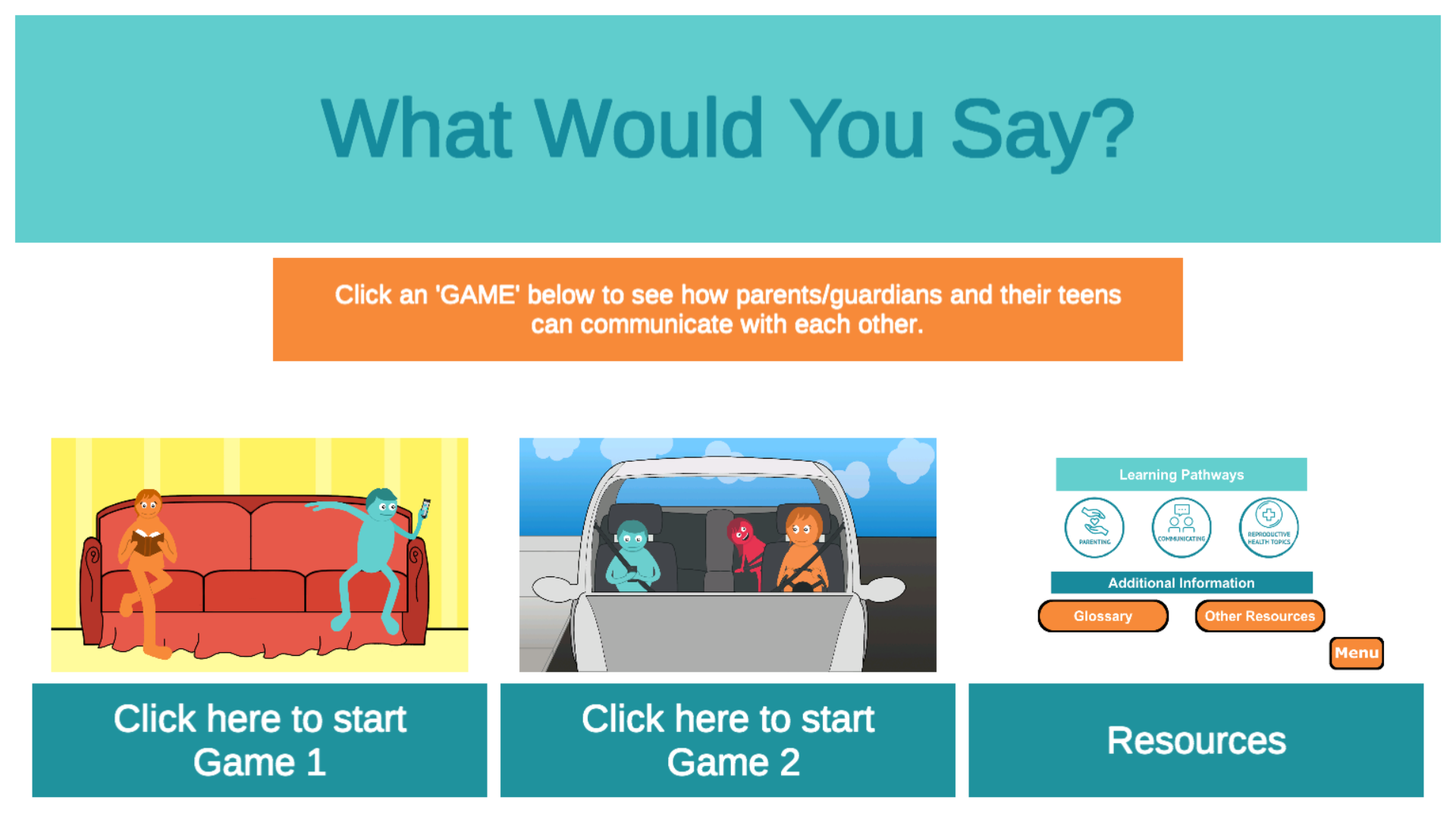How Better Parent-teen Communication Can Improve Reproductive Health

Editor’s Note: PAT was developed with help and guidance from Dr. Aletha Akers, along with colleagues on Dr. Akers’ research team who continue to maintain and create content, Ava Skolnik, Gabrielle DiFiore and Crystal Anokam, as well as Drexel University game design student Andrew Bangs.
Adolescence is a significant time in a young person’s development, particularly when it comes to their sexual and reproductive health. However, many parents and caregivers are reluctant to initiate conversations with their teenagers about safe sexual behaviors. Not only is it important that caregivers initiate these conversations, but they should occur early and often because communicating about numerous reproductive health topics is a lifelong process. In fact, research shows that teens who have open and honest communication with their parents about sex are more likely to delay sexual activity, have fewer partners, and use condoms and other contraceptives.
Since September is National Sexual Health Awareness month, I wanted to discuss a few resources my research team has developed that can help parents talk to their teens about sex. With a rise in technology and information readily available at our fingertips, we here at PolicyLab developed a website, ParentsAreTalking.com (PAT), which bridges the gap between having accurate reproductive health information and the communication skills necessary for parents to convey it to their teen.
The website contains articles written by our experts, parents and even teens that cover a variety of topics related to contraception and condom use, healthy relationships and consent, gender and sexuality, puberty and anatomy, sexually transmitted infections (STIs), and much more. We strive to continually emphasize how to initiate these sometimes “difficult” conversations, build trust, and foster strong relationships between caregivers and their teens.
The Research Behind PAT
Prior to launching PAT in November 2016, we refined and developed website content based on feedback from our Children’s Hospital of Philadelphia (CHOP) Family and Youth Advisory Boards. This included creating interactive anatomical pictures, parent/adolescent communication scenarios and a reproductive health knowledge quiz. We continued this feedback strategy, surveying parents and adolescents while designing new interactive games. We piloted game scenarios and parent and teen responses amongst families in our Adolescent Specialty Care Clinic and Karabots Pediatric Care Center. Their feedback informed all aspects of the games, including content, mechanics and graphics.
Additionally, we collect user metrics about the PAT website from an internal reporting panel, Google Analytics. With this data, we are able to analyze what users are interacting with on the website, how long they are navigating through various pages, what topics receive the most attention, how many new users and interactions per month we receive, and most importantly, how users found our site. We use this feedback to generate a user-centered experience with relevant articles and content related to frequently searched terms or articles viewed.
Our goal with the articles and content presented on the website is to address key factors influencing parent-teen communication around various reproductive health topics, or behavioral determinants. These behavioral determinants include improving their self-efficacy, attitudes, perceived norms, and environmental barriers to communicating about reproductive health and access to confidential reproductive health services for their teen. We know that it can be difficult talking to your teens about sexual health, so we created a few interactive games to help.
Initiating Conversations about Puberty
Evidence confirms what we know many teens experience: puberty can be a trying time for adolescents with the many physical and emotional changes that accompany it. They may need help understanding what is happening with their bodies, as well as help with communicating about the things they need—whether that be guidance for improving their mental health, menstrual hygiene products or simply just deodorant. That is why we developed an interactive game, called “What Would You Say?”, to help parents initiate conversations with their teens about body odor during puberty. The user can click through how they would initiate a conversation with their teen, how their teen may respond and what communication skills they can use to successfully converse about these topics. Overall, we want this game to help normalize conversations around puberty, destigmatize the “negative” aspects of puberty and teach parents how to approach this topic in a non-judgmental or confrontational fashion.

Initiating Conversations about Healthy Romantic Relationships
Similarly with adolescents thinking about starting romantic relationships, teens are more likely to be open about people they are attracted to if their caregiver seems genuinely interested in listening. Conversations between parents and their teens about romantic relationships should be more than just about sharing information on boundaries, condom use, consent and healthy communication. It should also prioritize building a relationship between parents and their teens that emphasizes open and honest communication. That is why we also developed another interactive game called “What Would You Say?” that tackles how to initiate conversations about engaging in romantic relationships. This game provides parents and caregivers with tips on how to start these conversations, how they can be an “askable parent”, and provides information on the feedback we received from parents and teens when creating these game scenarios.
Our hope is that by providing parents and caregivers with the information and communication skills necessary, we can reduce adverse reproductive health outcomes among our adolescent population. If we arm our teens with the knowledge and skills to practice safe sexual behaviors, understand their bodies, and have open conversations with their parents and caregivers, we can increase their long-term health and wellness so they can grow into healthy, productive adults.
